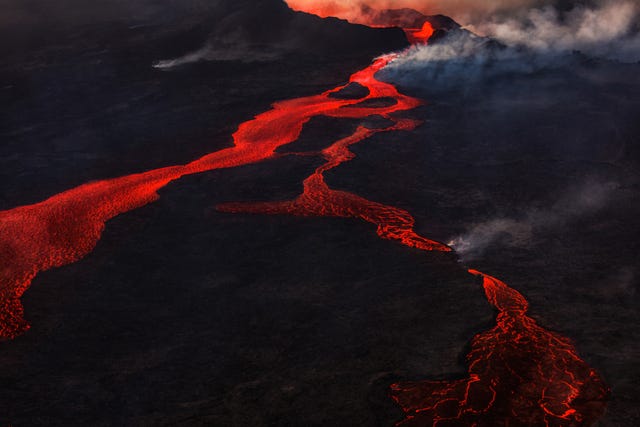[ad_1]

Arctic-ImagesGetty Images
- Architect Arnhildur Palmadottir unveiled her Lavaforming concept at Reykjavik DesignMarch Festival.
- The idea shows natural flows could be cooled in forms that then get used in building projects.
- Palmadottir knows the idea is unlikely, but also wants to bring attention to the “hopelessness of modern architecture and the future.”
Calling lava the “building material of the Earth,” Icelandic architect Arnhildur Palmadottir floated an explosive idea at the Reykjavik DesignMarch Festival: using lava as a building material.
Exploring beyond existing systems to push architecture toward real climate change solutions while connecting with science and technology, Palmadottir’s SAP architecture firm has spent years investigating building construction using geological layers. That led them to lava.
“[Lava] flows uncontrollably to the surface, forming the nature we know and love,” she said during her Lavaforming presentation at the festival.
With the Earth itself constantly producing its own building material—a recent eruption in Fagradalsfjall produced enough lava to supply building material to construct a new city in just a few weeks—Palmadottir admits it may be a somewhat naïve attempt at forming a new building system, but still wants to push the concept forward until it isn’t possible any longer.
Understanding that “harnessing the powers of volcanoes is not an easy task,” Palmadottir says that cooled lava proves strong enough to act as a structural system, capable of serving as the foundation and walls for buildings. Getting to that lava may prove a little trickier. That said, her team has already explored some possibilities and rested on three potential ways lava has a practical use in a future building system.
An ongoing geological research drill site in Iceland, the Icelandic Deep Drilling Project, has struck lava twice. Using that same drilling technology, if they were able to pump lava to the surface, it would not only reduce underground tension, but could allow them to channel lava into a production station that forms and cools the lava into predetermined shapes. Those shapes could then be used to construct buildings, and even cities.
Another idea envisions using that mined lava and treating it akin to molten glass. Ongoing MIT research around 3D printing with molten glass, a similar temperature to molten lava, opens the possibility of 3D printing with molten lava. “So, the technology is already there,” Palmadottir says. “We imagine 3D printing using molten lava is not that unrealistic of an idea.”
The notion of harnessing volcanic eruptions includes digging channels in the landscape in volcanic areas with the soil between the channels high enough that when lava flows into the channels and is stopped at the other end, it creates the frame of a city. Palmadottir says it’s also possible to “cut walls into smaller pieces and transport them elsewhere.”
As makers involved in a system—the built environment—responsible for as much as 40 percent of all carbon emissions globally, Palmadottir says it is on the industry to help find a solution. The Lavaforming concept is her step toward that and she’s asking people to think outside the traditional system. While Lavaforming may be “radical,” it is also grounded in science and technology, and she hopes it brings multiple disciplines together to create a new future of building materials.
It’s a hot topic. Molten, even.
This content is created and maintained by a third party, and imported onto this page to help users provide their email addresses. You may be able to find more information about this and similar content at piano.io
[ad_2]
Source link
